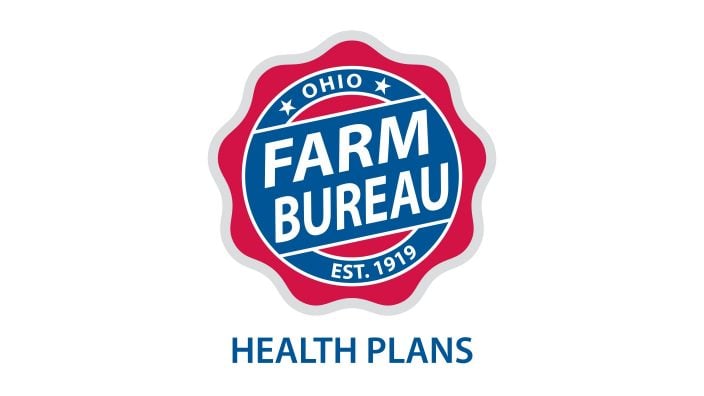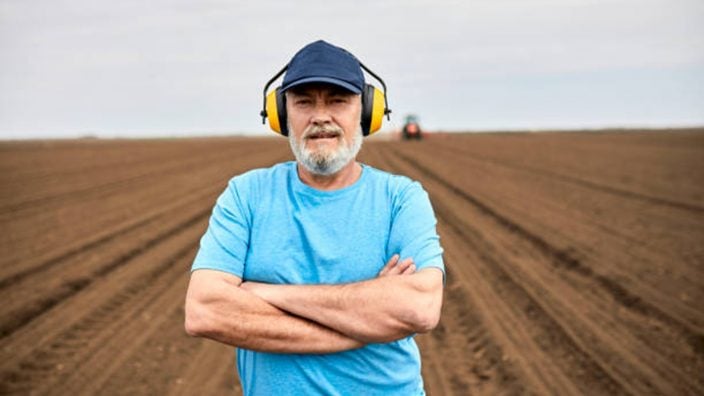Applications for Ohio Farm Bureau Health Plans now available
Members have three ways to apply: contacting a certified agent, calling 833-468-4280 or visiting ohiofarmbureauhealthplans.org.
Read MoreNote: This story was updated in 2017.
Farmers who are enrolled in the Current Agricultural Use Valuation (CAUV) program have been seeing sharp increases in the taxable value of their land. While no less frustrating to landowners, these increases can be explained by looking at how the formula works.
CAUV was established after Ohio Farm Bureau campaigned for a constitutional amendment to have farmland taxed for its agricultural value, rather than its fair market value. The agricultural value of farmland is determined by the following equation:(Income from agricultural production – Non-land production costs)/ Capitalization rate = Current Agricultural Use Value
1. Start with gross farm income: The projected farm income for all land enrolled in CAUV is based on the soil type and data from three crops: corn, soybeans and wheat.Yield information for each of these crops starts with Farm Service Agency production data and is adjusted by the 10-year average of actual statewide yields.Prices for each crop are based on a survey of Ohio grain elevators.*
2. Subtract non-land production costs*: These costs are based on Ohio State University data and include typical farm input costs for corn, soybeans and wheat.
3. Divide by the Capitalization Rate*: This rate is based on the mortgage interest rate for a 15-year fixed rate mortgage from Farm Credit Services with 40% equity and 60% debt and is adjusted for taxes.
*When determining crop prices, production costs and the capitalization rate, the last seven years of values are used, with the highest and lowest values removed and the remaining five years averaged.
Corn:
Soybeans:
Wheat:
Factoring in Cropping Patterns:
Final Per Acre Income for Miami Silt Loam:
Current Agricultural Use Value:
So, why did CAUV values increase?
From 2008-2014, the CAUV values resulting from the CAUV calculation saw large increases. This was due to two main factors:
(1) Crop prices had increased substantially through 2012, and those higher crop prices were added into the formula, drawing up the average crop price used in the calculations. This resulted in a higher net income in the calculation as crop prices outpaced increases in production costs.
(2) At the same time, the capitalization rate used in the formula decreased substantially. The capitalization rates dropped from around 8% in the mid-2000s to a low of 6.2% in 2014. This was a result of interest rates being held at or near zero by the Federal Reserve which also held the interest rates used in the calculation at historic lows.
Simply put: A higher net income divided by a lower capitalization rate equals an increase in CAUV land values.
What’s changed since 2014?
Since 2014, Ohio Farm Bureau has lobbied the tax department and the Ohio legislature to make important changes to the CAUV calculation. In 2015, OFBF was successful in gaining data updates to the CAUV formula from the Ohio Department Taxation. These changes prevented bigger increases and ensured that the most up-to-date data available was being used in the CAUV calculation. In 2017, OFBF was successful in lobbying the General Assembly to include CAUV reform language in the biennial budget bill. Those changes ensured the most accurate data was being used to calculate the capitalization rate and allowed conservation lands to be valued at the minimum value, phasing in over a six year period to allow communities to adjust to more accurate valuations. The capitalization rate changes alone created an average 30% decrease in CAUV cropland values for those counties on the 2017 reassessment cycle. Counties on the 2018 and 2019 reassessments will see the impacts of CAUV reform as they reach their next reassessment.
The rate of increase in CAUV land values does not necessarily translate to the same rate of increase in taxes owed by the landowner due to tax credits and other factors. CAUV values remain substantially lower than the fair market value, making the program essential to farmers.


Members have three ways to apply: contacting a certified agent, calling 833-468-4280 or visiting ohiofarmbureauhealthplans.org.
Read More

For Ohio and PJM region, the outlook is reassuring—ample reserves and strong planning should keep the power on.
Read More

The average price for a classic holiday feast for 10 in Ohio will cost $55.87.
Read More

Meet the four new members of Ohio Farm Bureau’s Young Ag Professionals State Committee.
Read More

HB 10 ensures transparency around how imitation meat is labeled, along with restoring needed flexibility around the application of crop protection tools.
Read More

FBi Buildings has been delivering exceptional post-frame construction solutions for 65+ years, earning the trust of satisfied customers throughout the Midwest.
Read More

Ohio BWC industrial hygienists, safety consultants, and ergonomists can visit your farm, help spot risks, and suggest improvements that make a real difference.
Read More

Nationwide’s Grain Bin Safety campaign expands its reach, delivering grain rescue tubes and training to 62 fire departments in 2025.
Read More

Urge President Trump and Congress to act before the end of 2025 to provide immediate relief and long-term stability for America’s farmers and ranchers.
Read More

Meet Marion County Farm Bureau member Clayton Lust, a third-generation grain farmer and Beck’s Hybrids dealer, and Kelsey Bezdek, a first-generation livestock farmer and Lake County Farm Bureau member.
Read More